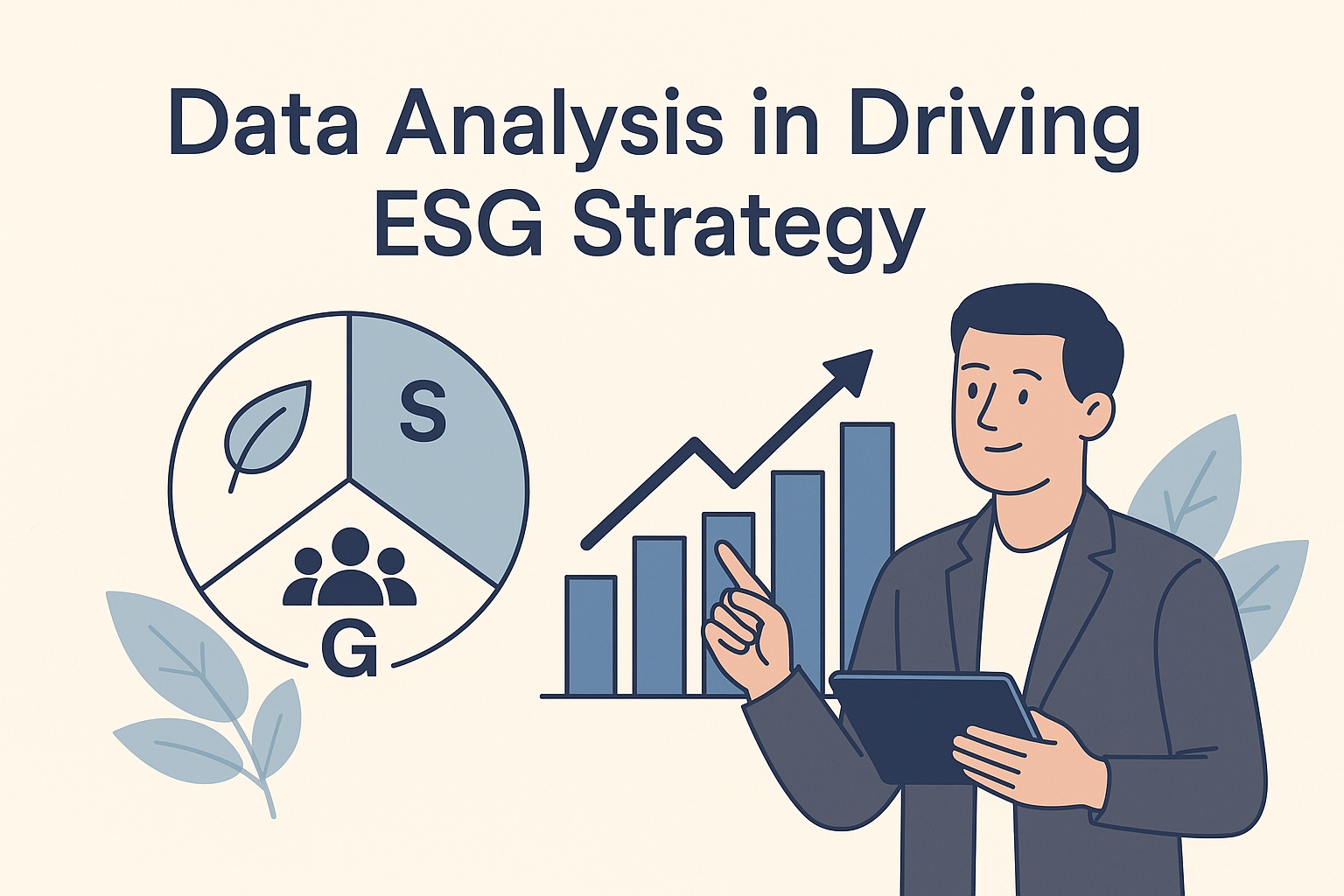In today’s business environment, Environmental, Social, and Governance (ESG) factors are no longer optional—they’re strategic. Stakeholders expect organizations to be transparent, responsible, and forward-thinking. But how do businesses make ESG actionable and measurable?
That’s where data analysts come in.
From identifying ESG risks to tracking sustainability KPIs, data analysts are the bridge between raw data and meaningful impact.
What Is ESG and Why It Matters
ESG stands for:
- Environmental: Resource consumption, carbon emissions, waste management
- Social: Employee well-being, community impact, diversity and inclusion
- Governance: Ethical practices, board structure, compliance
ESG metrics help companies manage risks, improve reputation, attract investment, and ensure long-term success.
The Key Role of Data Analysts in ESG
1. Turning Complex Data into ESG Insights
Data analysts transform raw environmental, social, and governance data into insights. Whether it’s energy consumption or employee engagement scores, analysts clean, visualize, and interpret the numbers to show what really matters.
2. Tracking ESG KPIs
Businesses now track metrics like:
- Carbon footprint per product
- Water usage per facility
- Workforce diversity percentages
Data analysts set up dashboards and reporting tools to track these KPIs in real-time.
3. Ensuring ESG Data Accuracy and Compliance
Inaccurate ESG data can lead to reputational damage or regulatory penalties. Analysts validate and audit ESG data sources, ensuring quality and compliance with standards such as GRI, SASB, or CSRD.
4. Identifying Trends and Risks
With the help of tools like Power BI, Excel, or Python, data analysts forecast trends and highlight risks. For example, spotting a sudden increase in emissions or a drop in employee satisfaction can prompt immediate action.
5. Building ESG Dashboards for Executives
Decision-makers need ESG data at their fingertips. Data analysts build executive-friendly dashboards that:
- Visualize ESG performance
- Compare benchmarks
- Support strategic decisions
6. Collaborating Across Departments
ESG isn’t just about sustainability teams. Data analysts work with:
- HR (social metrics)
- Finance (risk forecasting)
- Operations (resource usage)
This cross-functional role ensures ESG strategy is embedded across the organization.
Why Data Analysts Are Critical to ESG Success
✅ Make ESG measurable
✅ Improve transparency and reporting
✅ Drive cost savings through efficiency
✅ Build trust with investors and customers
Tools Commonly Used in ESG Data Analysis
- Power BI / Tableau – for dashboards and visualizations
- Excel – for tracking and auditing
- Python / R – for advanced analytics
- ESG Reporting Software – such as Sphera, Workiva, or Enablon
Final Thoughts
As ESG becomes a core part of corporate strategy, the role of data analysts is more important than ever. Their ability to make sense of complex data and present it in actionable, transparent ways can shape the future of sustainable business.
If you’re a company looking to improve your ESG strategy, start with your data—and the right analyst to interpret it.
